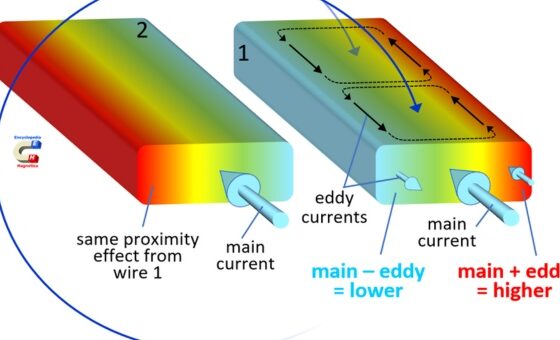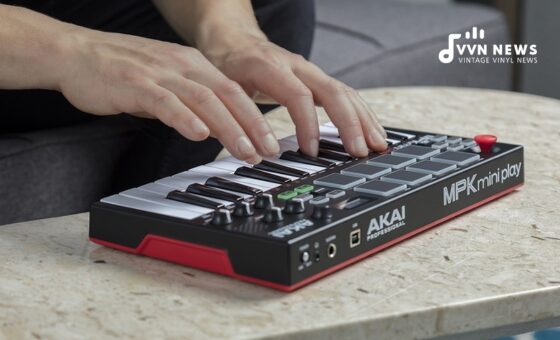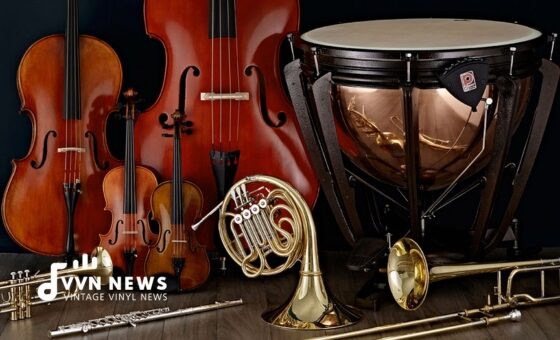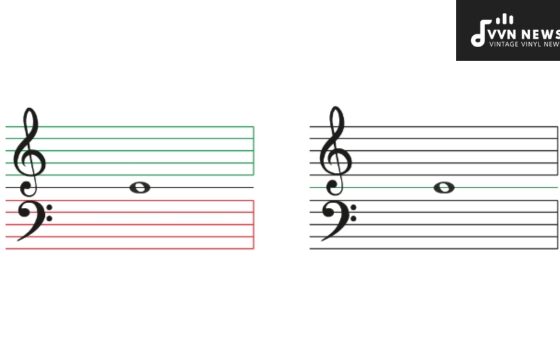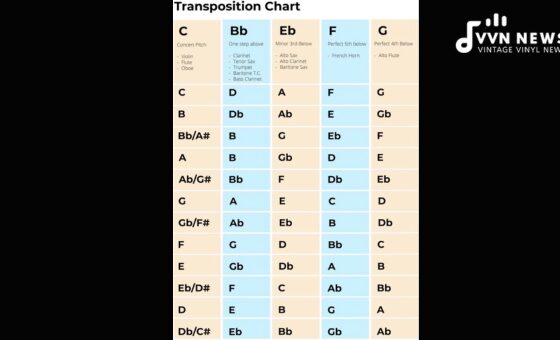As a passionate music enthusiast and guitar player myself, I am always fascinated by the variety and beauty of electric guitars.
Specifically, the different types of electric guitars – body styles & shapes – that cater to every musician’s unique sound and style.
Diving deep into this realm opens up a world full of opportunities to create amazing music, from mellow blues tunes to fiery hard rock anthems.
So, join me as we journey through the intricate world of electric guitars, exploring their body styles and shapes.
Electric guitars are an embodiment of craftsmanship at its finest. Each design carries with it years of research, development, and commitment to bringing out the best tones and making playing as comfortable as possible for the artist.
The diversity in body styles and shapes not only adds to aesthetics but equally contributes towards versatility in sound production.
Understanding these types will not only positively impact your buying decisions but will also enhance your appreciation for these marvelous instruments.
Understanding the Basics of Electric Guitars

Electric guitars are sophisticated musical instruments with numerous components working in harmony to produce sound.
Essentially, they are built by stretching strings made from nickel or steel over a board (or neck), wherein when one plucks a string, it vibrates.
An electric guitar’s magnetic pickups transform those vibrations into electrical signals that are then amplified before being emitted as sound through a speaker.
However, the key distinctive feature of an electric guitar is its body style, which heavily impacts its tonal qualities.
We can easily categorize them under solid body, hollow body, and semi-hollow body guitars – each with its unique resonant characteristics and ideal music genres.
Ultimately, an understanding of these basics will help you uncover how different guitar designs can best fit your playing style and sonic preferences.
As we dive deeper in the subsequent sections, we’ll explore the various electric guitar types to guide your journey through this intriguing world.
Also Read: 25 Best Guitarists Of All Time [String Masters Who Shaped Music]
Insights into the structure of Electric Guitars
The anatomy of an electric guitar is richly detailed, and understanding it empowers you, as a player, to optimize the instrument’s performance. At the core, every electric guitar comprises certain primary components:
- The Body: The body is the main section of the instrument and is usually made of wood. The shape and material of the body have a significant impact on its tone and resonance properties.
- The Neck & Fretboard: Connected to the body is the neck which contains metal frets that determine pitch when a string is pressed down against them. Covered by this portion of the neck called the fretboard – usually made from rosewood or ebony.
- Pickups & Electronics: These convert string vibrations into electrical signals. They are available in two main forms: single-coil (sound brighter/crisper) and humbuckers(double coil = fuller, mellow sound).
- Bridge & Tailpiece: Where strings are fastened. Quality here influences sustain as well as tuning stability.
Understanding these parts gives you knowledge about how they work together to create sound.
It equips you with greater control over your instrument, allowing for better adjustment to the desired tone and playability characteristics.
The Role of Body Styles and Shapes for Electric Guitars

When selecting an electric guitar, one cannot ignore the pivotal role played by its body style and shape. These parameters deeply influence two critical aspects: tone and playability.
Tone and Resonance
Electric guitars leverage magnetic pickups to convert string vibrations into sound, but the body style profoundly impacts this sonic output. For example, a solid-bodied guitar is rich in sustain and bolder tones, perfect for rock ‘n’ roll or hard-hitting metal. In contrast, hollow-bodied guitars are prone to feedback – an essential characteristic of blues and jazz music.
Playability and Comfort
Aside from aesthetics, the guitar’s physical design also affects its overall weight distribution and how it feels against your body while playing. For instance, smaller lightweight models like the Gibson SG tend to be more comfortable to handle on stage than heavier options like the Les Paul.
Soundboard Effects
Hollow-body guitars with larger soundboards can compensate for their feedback susceptibility by providing a distinguishably warm resonance quite popular among jazz musicians.
On the other hand, solid body guitars maintain consistency in performance across different volumes showing their versatility.
Understanding the role of body styles and shapes in electric guitars should be a prime consideration when deciding upon your instrument.
It’s not just about aesthetic preferences; it’s about finding that silver lining between your comfort as a player and achieving your ideal tone.
The Majestic World of Solid-Body Electric Guitars
Contrary to likely assumptions, the sound from an electric guitar doesn’t come from its body; instead, it comes from the magnetic pickups capturing string vibrations and converting them into signals.
The solid-body electric guitar, as its name suggests, has a solid piece of wood at its core.
Among the variety of guitar types out there, it’s this particular species that enjoys widespread use across multiple genres due to its stability and resilience against feedback.
So, let’s focus on some of the most iconic solid-body guitars you could find on stage pretty much anywhere.
Fender Telecaster
Fender’s Telecaster was indeed a game-changer in the world of music, launching back in 1951 when nothing similar existed.
Known for its “twangy” sound, the simplicity in design and unfailing dependability made it an instant favorite among musicians.
It became a preferred choice for country musicians but gradually started to find its place in rock n roll, indie rock, punk rock, and blues as well.
Famous artists like George Harrison (The Beatles), Bruce Springsteen, and Keith Richards have been known for their frequent use of Telecasters.
Fender Stratocaster
Not long after the success with Telecaster, Leo Fender introduced the world to the Stratocaster.
This is probably one of those guitars you envision when you hear ‘electric guitar.’ Strat is celebrated for its contoured body shape, providing player comfort, which was revolutionary at that time.
Stratocasters are popularly known for their bright and clear tones courtesy of three single-coil pickups. They’ve been used by music legends such as Jimi Hendrix, Eric Clapton or David Gilmour making it a prime choice for bluesy-rock or funk genres.
Gibson Les Paul
The sheer mention of the Gibson Les Paul evokes images of musical classics. Introduced in 1952 by Gibson company with guitarist Les Paul as a signature model, these are characterized by their warmer tones due largely to humbucker pickups(Less noisy compared to single coils).
These iconic guitars have found homes across genres like rock music(Jimmy Page – Led Zeppelin), jazz music(Joe Pass), or even heavy metal(Zakk Wylde), validating their versatility.
Also Read: 20 Best Boost Pedals In 2025 [Pump Up Your Guitar Performance]
Gibson Explorer & Flying V
Two futuristic models released by Gibson during the 50s were Explorer & Flying V. They were initially considered too radical; with time, they became popular, especially within the hard rock/metal genre, because of the aggressive imagery they presented.
Signature pointy designs give them distinctive appearances, while a warm humbucker tone suits the metal genre perfectly.
The ‘Super Strat’
In itself, a range rather than a specific model – Super Strats draw heavily from iconic designs like the aforementioned Stratocaster but come loaded with modifications.
These high-performance beasts often sport double-locking tremolo systems (for dive bombs without losing tune), hot-rodded humbuckers(for high gain sounds), and super fast necks.
They rose into prominence during the 80’s ‘shredder’ era but remain incredibly popular among modern metal/prog scene players today.
Remember that each player finds comfort and tonal satisfaction according to their unique tastes and playing styles.
Apart from specifications provided by manufacturers; it’ll be your personal touch that’ll deliver remarkable performances once strumming commences on these beautiful solid-body beasts.
Also Read: 15 Best Electric Guitars Of 2025 [Upgrade Your Riffs With These Picks]
The Charm of Hollow-Body Guitars in Creating Jazz Melodies

You’ve most likely come across some extraordinary jazz musicians boasting their beautiful hollow-body guitars, and for good reason.
From smooth, sultry tones to bright, crisp sounds, hollow-bodies are known for the distinct ‘oomph’ they lend to jazz melodies.
Characterized by a large body that is fully hollow on the inside, these beauties possess an unpowered, stand-alone sound that’s a treat to any music connoisseur’s ear.
Gibson ES-175
No conversation about hollow-body guitars is complete without mentioning the iconic Gibson ES-175.
Introduced in 1949, this gem of an instrument has been an integral part of the jazz world ever since.
Famous guitarists like Steve Howe and Pat Metheny are known to have incorporated its typical rounded tone structure into their music.
The ES-175 boasts a single-cutaway body made of laminate maple – a prime reason for its clear high-end tones and impressive resonance.
Paired with dual humbuckers, it enables players to push their volume levels without fretting over unwanted feedback. All this equates to a guitar that delivers brilliant jazz tones.
Gretsch Streamliner G2420
Next up is the Gretsch Streamliner G2420, which envelops you with its breathtaking vintage aesthetics coupled with modern sound capabilities. Even though it has an affordable price tag alongside Gibson and Ibanez guitars, it doesn’t compromise on style or efficiency.
It houses Broad’Tron humbuckers – designed explicitly for the Streamliner series – which offers high output with great clarity throughout the frequency spectrum, making it highly versatile sound-wise: you can produce anything from old-school jazz blues to contemporary rock music.
The Ibanez Artcore AFV75
For those looking towards less traditional and more versatile options without breaking the bank, The Ibanez Artcore AFV75 is a perfect pick.
Beneath its sleek aesthetic lies supreme quality components like Classic Elite pickups (reminiscent of old-school jazz box stylings), providing rich yet nuanced tones.
One fascinating aspect about AFV75 is its slim neck which makes holding chords easier; thus resulting in a playing experience that is comfortable even during extended sessions.
Epiphone Casino
Last but not least on our list is another legendary guitar – the Epiphone Casino – famous due to its association with The Beatles.
Its fully hollow build design significantly impacts its tone, making it warmer and full-bodied – ideal for classic jazz or gritty rock ‘n roll tunes alike.
The presence of P90 pickups takes this versatility another notch by adding biting treble end richness to your sound palette while giving you a strong midrange essence typical of vintage-style guitars.
While all four guitars discussed above serve as great options for creating those floating jazz melodies.
They each possess unique abilities that ensure there is one out there waiting just for you – whether you are toeing into your first guitar purchase or looking at expanding your existing collection.
Also Read: 32 Best Guitar Synth Pedals [Upgrade Your Guitar Effects]
Semi-Hollow Body Guitars: Finding the Perfect Harmony
One of my personal favorites, the semi-hollow body electric guitar, strikes the perfect balance between solid-body and hollow-body guitars by combining the best of both worlds.
Offering a resonant and rich tone akin to hollow bodies with increased sustain and less feedback characteristic of solid bodies, these are aptly dubbed “Combo musical magic.”
Like their hollow counterparts, semi-hollow body guitars typically have f-holes on their top surface but with a center block running down the middle to eliminate unwanted resonance and feedback often associated with completely hollow bodies.
Their structure provides an excellent blend of warm acoustic attributes along with higher gain and overdrive capabilities.
Let’s explore some models showcasing this marvelous design:
Gibson ES-335
The Gibson ES-335 is an absolute legend in this category. Introduced way back in 1958, it has become synonymous with semi-hollow body electric guitars and is much loved by blues, rock, and jazz virtuos alike.
Its fully arched top gives out a crisp vintage tone, while its maple-poplar-maple construction ensures solid resonance.
PRS S2 Custom 22 Semi-Hollow
A brainchild of Paul Reed Smith (PRS), the S2 Custom 22 Semi-Hollow delivers exceptional versatility with its tonal clarity and light-weight comfort. This guitar doesn’t sacrifice anything in terms of sound quality while offering an incredible budget-friendly price point.
Fender Telecaster 72 Thinline
Another fantastic piece is none other than Fender’s classic Telecaster 72 Thinline.
Revered for its twangy Tele tones combined with a wide range humbuckers, it brings more bass response and robust tones to your music giving it that punchy rock n roll vibe.
This one’s a winner for country players or anyone looking for that distinctive ‘Tele Twang’.
Rickenbacker 300 Series
Rickenbacker’s 300 Series, particularly the 330 model, is historically significant due to its prominence in “British Invasion” era music.
Its special “Rick-O-Sound” stereo output allows for boundary-pushing sonic adventures – making it an attractive choice for experimental indie rock bands.
Each identified model offers unique characteristics catering to different playing styles. With their versatile tones, these semi-hollow body guitars are worth considering as you embark on your musical journey.
Music ceaselessly evolves, as should our instruments. So go ahead; find your rhythm; strike your chords; play your melody.
Let them resonate through whatever guitar shape you choose! Music is about embracing the beauty of individual expression, after all.
Also Read: 20 Best Guitar Amps For 2025 [Experience Epic & Powerful Sound]
Effect of Various Body Shapes on Tone Output & Ease of Playing Electric Guitars

Have you ever noticed how different guitars produce distinctive tones or how some seem more comfortable to play?
Well, that’s not a coincidence. The body shape of an electric guitar significantly affects both the tone output and playing comfort.
Tone Output
The design impacts the resonance and sustain of a guitar — generally, the larger the body, the more resonant the sound.
For instance, guitars with larger bodies, such as dreadnoughts and jumbos, deliver a stronger bass response and longer sustain.
On the other hand, smaller-bodied guitars like parlor models often produce brighter sounds with less sustain.
Materials can also affect tone. Guitars made from woods like mahogany are known for their warm tones, while ash or maple-bodied ones produce a brighter sound.
Playing Comfort
The physical design has a significant influence on the ease of playing, too. Factors such as body size, shape, and weight play into how comfortable a guitar feels when standing or sitting.
Larger bodies might prove cumbersome for smaller individuals or those who prefer playing seated. However, they’re often favored by performers who play standing up as they rest comfortably against the player’s body.
On the flip side, smaller shapes like concerts or grand auditoriums are excellent choices for those prioritizing comfort over volume and resonance. They’re easier to hold and deliver great tonal balance, which is preferable for fingerstyle players.
From Stratocasters with their double-cutaway body enhancing upper-fret access to Les Pauls boasting single-cut designs that offer superior sustain – every shape brings in unique feel and tone characteristics worth exploring.
How to choose a suitable electric guitar that matches your genre preferences
Selecting the right electric guitar that complements your style and genre can dramatically improve your performance and enhance your overall musical experience.
Different guitars bring out varying tonal qualities, which are suited for specific types of music.
Here are some tips to help you make the ideal choice:
- Understand Your Genre: This is fundamental. If you’re into hard-rock or metal, a solid-body guitar would be preferable as it offers high volume levels and sustained distortion. For jazz or blues enthusiasts, hollow-body guitars are ideal due to their mellow tones. Semi-hollow guitars offer a balanced tone, making them versatile for various genres.
- Comfort & Playability: Comfort while playing should not be overlooked. Different electric guitar body shapes offer varying degrees of ease when playing. Ensure the model you choose feels comfortable in both standing and sitting positions.
- Your Budget: Guitar prices significantly range based on brand, quality, and type. Solid-body guitars tend to be more affordable than their semi-hollow and hollow counterparts. Plan according to your budget but remember – an expensive guitar doesn’t necessarily mean it’s the best fit for you.
Always make sure that getting familiar with these criteria will give you a solid start in choosing an electric guitar fit for your preferred musical style.
Also Read: 15 Best Electric Guitars Of 2025 [Upgrade Your Riffs With These Picks]
FAQs About Electric Guitars
What are the different types of electric guitars?
Electric guitars are typically categorized into three types: Solid body, hollow body, and semi-hollow body.
How does the electric guitar body style impact its sound?
The body style of an electric guitar significantly influences its resonance and tonal characteristics, making each type ideal for different music genres.
Why should I choose a solid body electric guitar?
If you prefer playing rock, punk, or heavy metal music, the solid body electric guitar’s powerful sustain and defined tone can be a perfect match for these genres.
Is a hollow-body or semi-hollow electric guitar better for jazz?
Yes, jazz musicians often prefer hollow or semi-hollow guitars as they produce a rich and warm tone thanks to their resonating cavities.
Can I play all genres of music with any type of electric guitar?
While it’s technically possible to play any genre with any type of electric guitar, certain guitars are known to complement specific genres better due to their unique sound qualities.
Conclusion
As we wrap up this discussion, it’s clear that the variety of body styles and shapes in electric guitars exist to cater to the unique sound and style preferences of every musician.
From the loud and robust sound of solid-body guitars meant for rock and roll, to the mellow tones from hollow-body guitars perfect for jazz or blues – the options are vast.
Personal preference, comfort, genre of music and budget are all factors that need consideration when choosing your electric guitar.
As you continue your musical journey, may this newfound understanding of electric guitar body styles serve as a guide in finding your ideal instrument.

